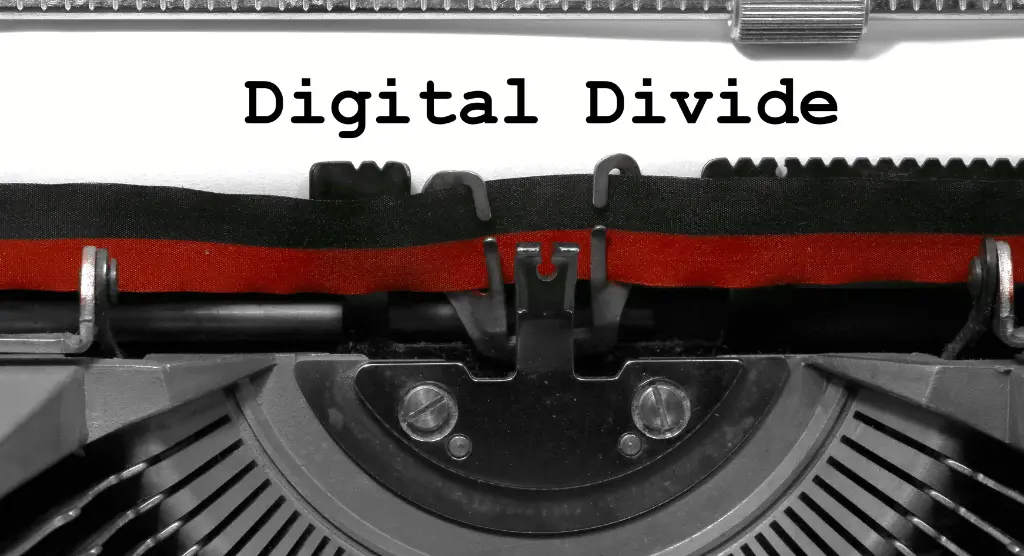The Digital Divide and Its Imprint on Our Future
By TOI Staff
February 8, 2023
Update on : January 15, 2025

The Internet has provided its user base with many various features and functionalities, making their lives easier. Internet integration and the Internet of Things allow you to access webpages, social media sites, cloud services, apps and so much more seamlessly across devices. However, the flip side of this has been the emergence of a striking disparity between those who have access to the Internet and its advantages, and those who do not. This phenomenon is called the ‘digital divide,’ and it has crept into the very social fabric of the post-modern world. To best understand its effects, the first thing that needs establishment is what the digital divide really is.
What Is the Digital Divide?
In layperson terms, the digital divide refers to the dichotomy between people who have and do not have access to the Internet and computers. However, there is so much more to the divide than just the provision or unavailability of Internet access.
The digital divide is not a single-dimensional chasm in classes, but rather, a multifaceted, complex problem that deeply impacts social order, today. Here are the factors that truly define the gulf between the Internet-using and non-Internet-using population.
- Affordability: This is determined by whether you can afford an Internet connection in your area, and the percentage of your income that you are required to spend to avail it.
- Availability: Whether Internet access is available in your region, at all, speaks volumes about where you stand in today’s social hierarchy.
- Relevance: Another determinant is whether a community has skills and technologies that coincide with that of Internet users from other regions; if they are equipped with an understanding of the Internet’s significance and have the provision of locally available applications.
- Quality: The upload and download speeds of the Internet service in your regions and the extent to which it is sufficient for its user base’s needs.
- Other Divides: This includes all the secondary contributing factors of inequality, such as interconnectivity, security, digital literacy, and equipment access.
The Digital Divide Aggravates Existing Divides
The imbrication of the Internet with the provision of almost all services has led to a deepening of not only the digital divide but a myriad of others along with it. In most cases, it is people who lack access to the Internet who are the ones with low-grade incomes, meaning that the Internet deficit leads to the establishment of socio-economic barriers. Here are a few to name:
Limited Educational Opportunities
There is a gaping divide between the knowledge and understanding of students who have access to the Internet and the Internet of Things and those who don’t. This occurs on a twofold level.
On one hand, Internet-savvy students are at an advantage when it comes to doing research and utilizing online resources for information. While non-Internet-using students would have to scavenge libraries, encyclopedias, and newspapers, those with the Spectrum one offer can get the same information with just a few clicks.
The full scope of this was felt when the Covid-19 pandemic hit, and the only means to gain education was through online or remote means. Those who didn’t have Internet access suffered great academic loss and a delay in their education.
On the other hand, the Internet is becoming an integral part of the world as we know it. To survive in a world that spins on the axes of the Internet of Things, upcoming generations need to be made familiar with web-based technologies and utilities. Students without Internet access are not only deprived of this but are also unable to learn about it without access to it. The complex workings and functionalities of the Internet are too hard to grasp in theory, and unless students are allowed to use it, they cannot learn.
Restricted Access to Healthcare Services
The availability of the Internet has made it the primary mode of information exchange, meaning that people who don’t have access to it are excluded from vital information regarding health or medicine-related information and resources. It is one’s first instinct to run a Google search when faced with a health concern. There are so many online clinics, testing services, doctor consultation platforms, therapy apps and chatbots, and even medical information that people without Internet access are deprived of.
There was a jarring disparity between the knowledge and understanding of people with and without Internet access, regarding the global pandemic. People who could not remain in the loop with social media were the first to fall prey to rumors and superstition, as well as propaganda.
Stunted Economic Growth
Every day, Internet-savvy parts of the world are venturing farther into augmented and virtual realities and web3 spaces. In the next few decades, when new technologies like AI and cryptocurrency become mainstream, they will eliminate most blue-collar jobs.
Technological development pushes workers who are unfamiliar with the Internet of things to the peripheries. Internet integration into everyday aspects of our lives becoming the norm has widened the gap between those who have access to it and those who don’t. The danger that arises is of a new class stratification, separating Internet users from non-Internet users.
















